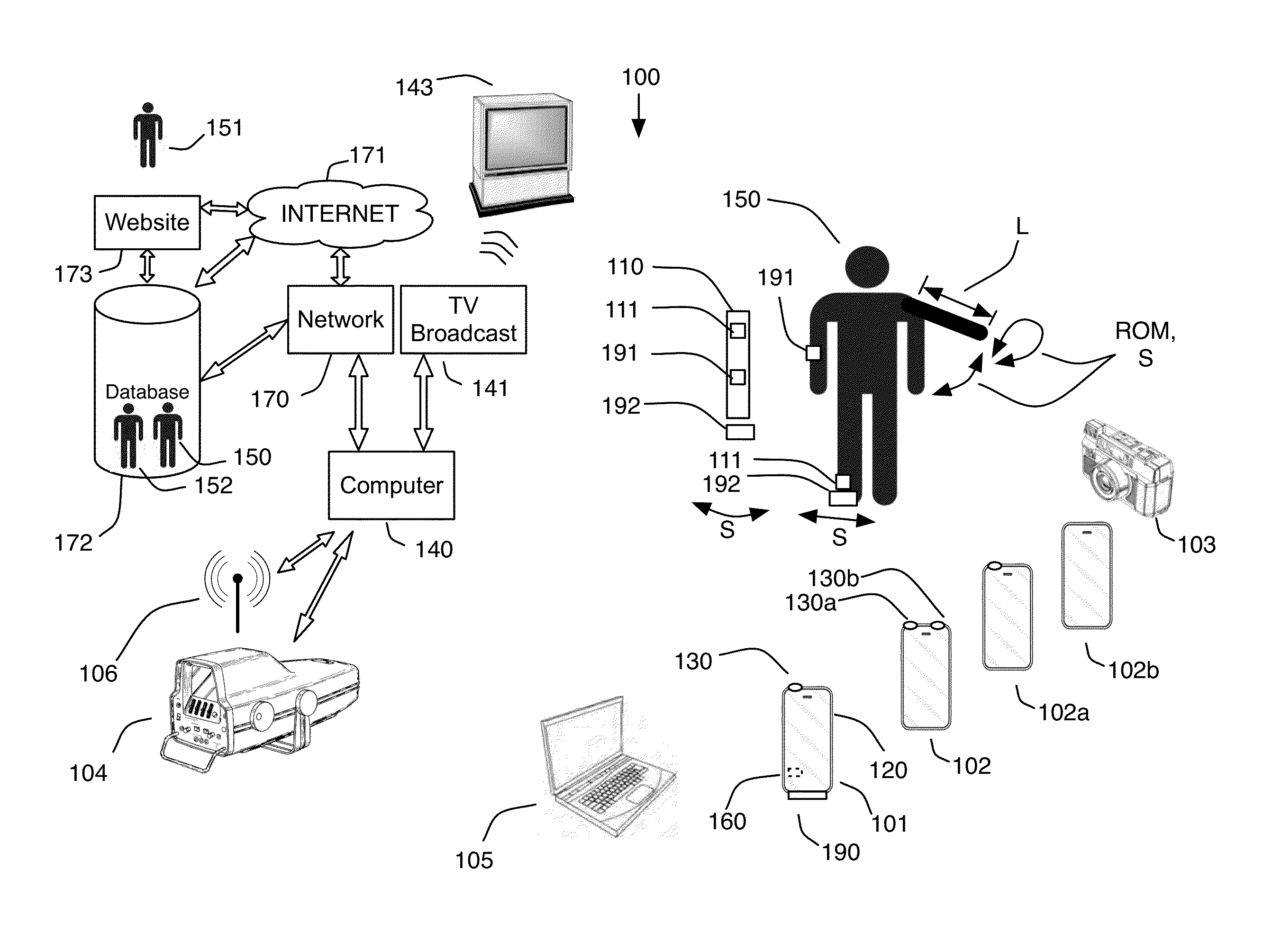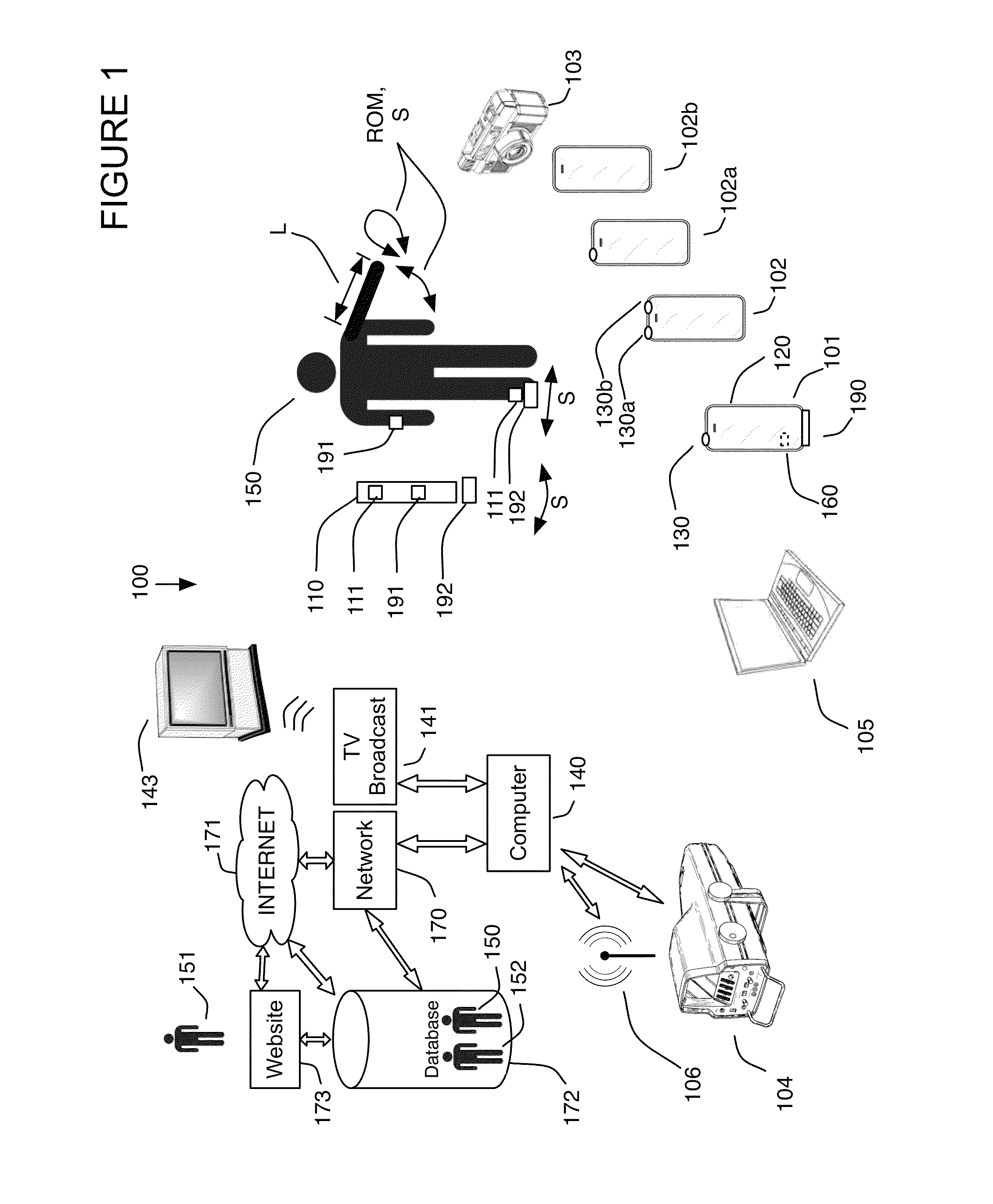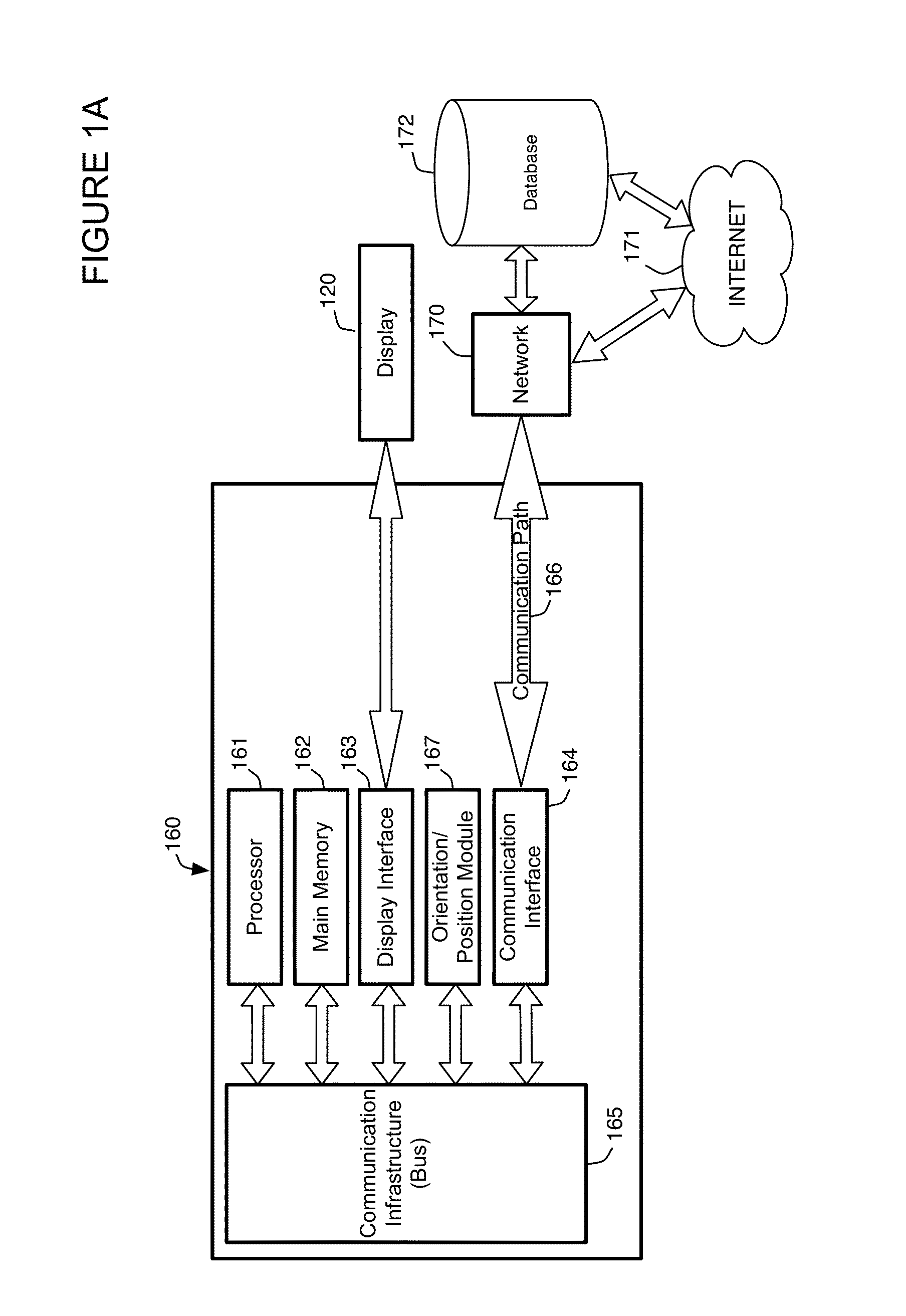These systems generally do not take into account the range of motion or direct measurements of speed through the range of motion of various joints of a user to optimize a fit for a piece of sporting equipment.
There are no known fitting systems based on
motion capture data obtained from
high resolution sensors, for example that include use of previously stored
high resolution motion data from the user or other users or piece of equipment, or from
motion capture data obtained through the analysis of historical videos for example.
Known systems do not contemplate
data mining of motion data and size, range of motion, speed and age of other users to maximize the performance of the user.
In addition, known systems do not provide a sensor and “app” that may be inexpensively obtained and utilized on a ubiquitous
mobile device such as a mobile telephone to prompt for and obtain distance, dimensions, range of motion, speed or other measurement data and suggest optimal equipment and enable the user to immediately purchase the optimally fitting equipment from the same
mobile device.
This technique has various limitations including inaccurate and inconsistent subjective analysis based on video for example.
Known implementations utilize a stationary multi-camera
system that is not portable and thus cannot be utilized outside of the environment where the
system is installed, for example during an athletic event such as a golf tournament.
These fixed installations are extremely expensive as well.
In addition, existing solutions do not contemplate mobile use, analysis and messaging and / or comparison to or use of previously stored motion capture data from the user or other users or
data mining of large data sets of motion capture data, for example to obtain or create motion capture data associated with a group of users, for example professional golfers, tennis players, baseball players or players of any other sport to provide a “professional level” average or exceptional
virtual reality opponent.
To summarize, motion capture data is generally used for immediate monitoring or sports performance feedback and generally has had limited and / or primitive use in other fields.
Any uses for the data with respect to fitting are limited, and generally based on the size of the user and do not utilize a given sensor to measure the user's size, range of motion and speed as well as the motion of the piece of equipment, for example after
coupling the motion capture sensor to the piece of equipment after the uncoupled sensor is utilized in measuring physical parameters of the user without the piece of equipment.
This also makes fitting for sporting equipment more difficult for the user, since the user must travel to a particular installation for
custom fitting for example.
There are no known systems that allow for motion capture elements such as
wireless sensors to seamlessly integrate or otherwise couple with a user or shoes, gloves, shirts, pants, belts, or other equipment, such as a
baseball bat, tennis racquet or
golf club for local analysis or later analysis in such a small format that the user is not aware that the sensors are located in or on these items.
In addition, known motion capture sensors are specifically designed to
mount to a piece of sporting equipment in a particular manner and are not intended to measure the user's size, range of motion or speed for example without being mounted on the piece of sporting equipment.
In addition, for sports that utilize a piece of equipment and a ball, there are no known portable systems that allow the user to obtain immediate
visual feedback regarding ball
flight distance, swing speed, swing efficiency of the piece of equipment or how centered an
impact of the ball is, i.e., where on piece of equipment the collision of the ball has taken place.
These systems do not allow for user's to play games with the motion capture data acquired from other users, or historical players, or from their own previous performances.
Known systems do not allow for data mining motion capture data from a large number of swings to suggest or allow the searching for better or optimal equipment to match a user's motion capture data and do not enable original equipment manufacturers (OEMs) to make business decisions, e.g., improve their products, compare their products to other manufacturers, up-sell products or contact users that may purchase different or more profitable products.
In addition, there are no known systems that utilize motion capture data mining for equipment fitting and subsequent point-of-sale
decision making for instantaneous
purchasing of equipment that fits an athlete.
Furthermore, no known systems allow for custom
order fulfillment such as assemble-to-order (ATO) for custom
order fulfillment of sporting equipment, for example equipment that is built to customer specifications based on motion capture data mining, and shipped to the customer to complete the point of sales process, for example during play or
virtual reality play or for example during a television broadcast.
There are no known systems that enable data mining for a large number of users related to their motion or motion of associated equipment to find patterns in the data that allows for business strategies to be determined based on heretofore undiscovered patterns related to motion.
There are no known systems that enable obtain
payment from OEMs, medical professionals, gaming companies or other end users to allow data mining of motion data.
 Login to View More
Login to View More  Login to View More
Login to View More 


